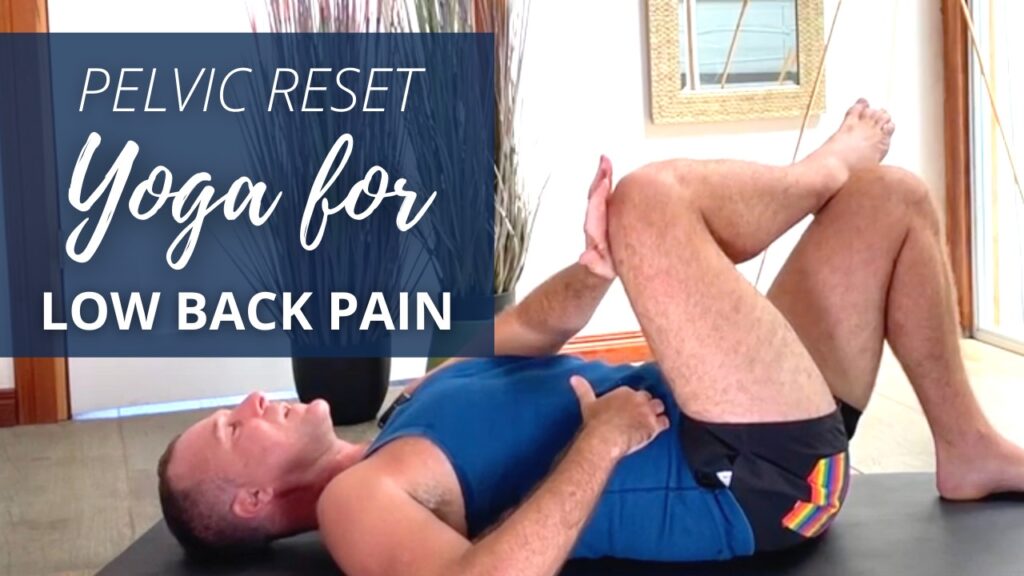
Do you suffer from lower back pain? What about neck pain or even jaw pain? If so, chances are you may have a tilted pelvis! Pain within and around the pelvis is a common issue that many people around the world suffer from.
As a foundational bone of the body, the pelvis is an essential component of our structure that helps with many basic movements. Our pelvis dictates how our muscles and bodies move as we walk, stand, and sit as well as many other movements. So when our pelvis is out of alignment, so is the body.
But don’t worry! With gradual practice, the pelvis can return to a natural, neutral position.
Say goodbye to back pain and hello to a more aligned body! The door to a pain-free life is unlocked, all you need to do is learn how to open it. So let’s explore why the pelvis is important, what causes pelvic irritation and how you can fix your pelvic floor. Additionally, we will show you how using the techniques of Applied Yoga Anatomy + Muscle Activation™ techniques will help you become pain-free!
If you are interested in deepening your yoga practice, even more, consider joining a yoga teacher training at Blue Osa! There are several different options to choose from including a two week 200-hour course and even a 28 day course. Yogi Aaron offers a 300 hour advanced training once every two year.
Alternatively, if you are looking to deepen your yoga practice at home, try one of Yogi Aaron’s muscle activation yoga classes. Ranging from 60 to 90 minutes these classes are a great way to get all the benefits of a yoga class from your living room! All you need is a mat and a body ready to relax.
What is the Pelvis?
The pelvis is made up of three bones (the hip bone, sacrum, and coccyx) that work together to support the body. As a basin-shaped structure, the pelvis also protects many abdominal organs. While also supporting the spinal column. Having a solid foundation through the pelvis is important for the rest of the body. As it is a central part of the skeleton.
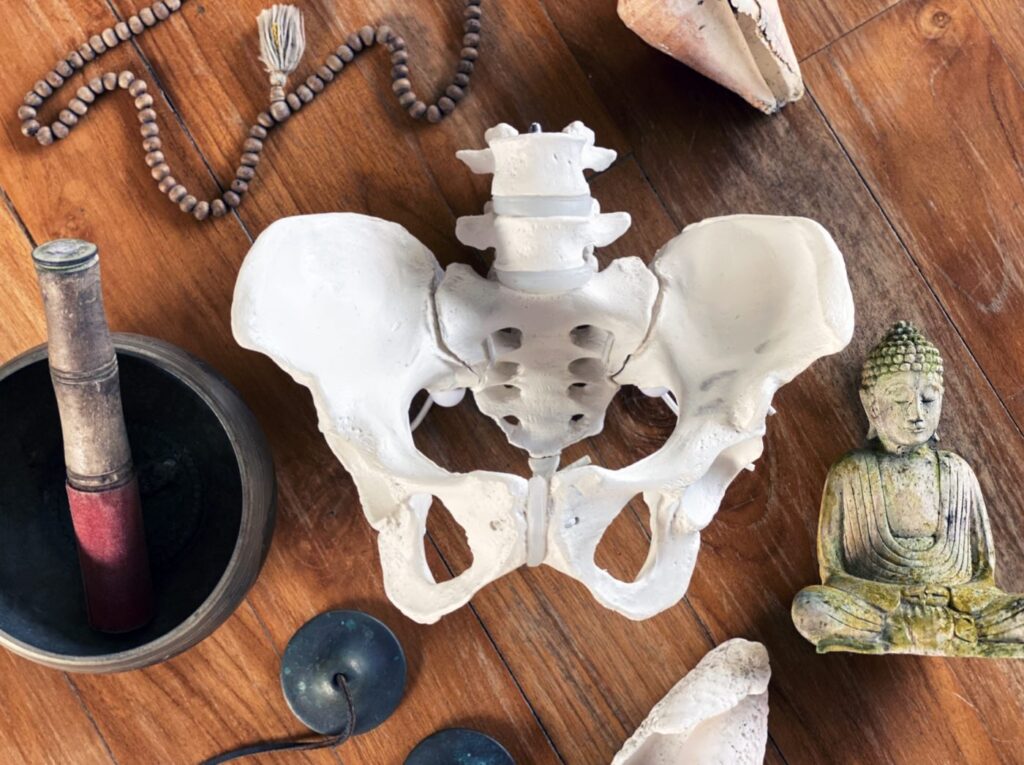
During childhood, the three bones of the pelvis are separate. But fuse together to form a single bone during puberty. As an adult, it can be very easy to push the pelvis out of alignment by standing
When standing straight, your center of gravity falls over the center of the body. This means that your weight should be centered over the pelvis. Using the pelvis, weight diffuses through the spinal column and to the legs. The pelvis helps to keep the body in line and assists the body to stand, sit and walk.
The pelvic floor is a collection of muscles and connective tissues located at the base of your pelvis. There are two main functions of the pelvic floor. The first is to support the abdominal organs. And the second is to assist in constricting muscles located in this area. When you have a weak pelvic floor, you may have trouble relaxing in this area or experience pain. If this is something you are suffering from, strengthen your pelvic floor by following this simple exercise:
How to Fix Your Pelvic Floor
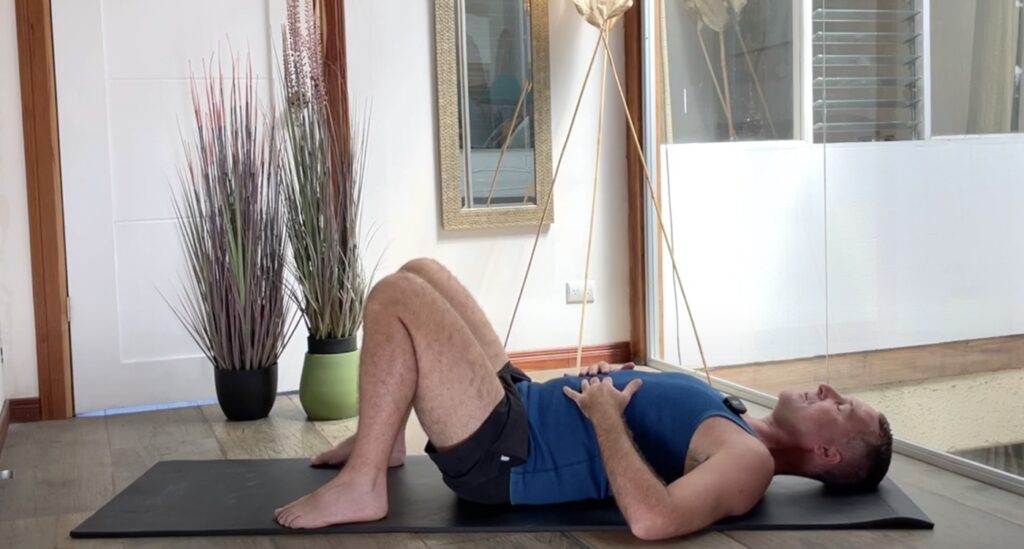
- Begin in a seated, comfortable position or lie down with knees bent and feet flat on the floor. Take a deep inhale.
- As you exhale, draw in your lower abdominal muscles. Contract this area as though you were trying to stop urine or gas
- Hold this for one to two seconds before letting everything go
Repeat this practice ten to fifteen times several times a week. This will work to strengthen the pelvic floor. But, if you are experiencing significant pain, it is always important to consult a doctor.
What Causes a Pelvic Tilt?

A pelvic tilt is a result of the pelvis tilted too far forwards or backwards. Alone, tilting your pelvis is not a bad thing. This is because moving forwards and backwards is the pelvis’ natural function. But, when your body is in a tilted position for a prolonged period of time, this can become an issue.
There are two different kinds of pelvic tilt: anterior and posterior. An anterior pelvic tilt is when the pelvis has an exaggerated tilt of the lumbar curvature and is tilted forwards. A posterior pelvic tilt is when the pelvis has a reduction of the lumbar curvature, tilting backwards. These two postures are opposites and can both cause discomfort.
Haffer, Henryk & Adl Amini, Dominik & Perka, Carsten & Pumberger, Matthias. (2020). The Impact of Spinopelvic Mobility on Arthroplasty: Implications for Hip and Spine Surgeons. Journal of Clinical Medicine.
Studies show* that even for individuals who do not show any symptoms of a pelvic tilt, it can still be a prevalent issue. Because of the relationship, the pelvis has to the spine and lower limbs, the degree of pelvic tilt is often assessed in clinical practice. Some research even suggests that as many as 85 percent of men and 75 percent of women present an anterior pelvic tilt. This is often caused by a lack of physical activity and excessive sitting.
Symptoms of a misaligned pelvis can come in the form of lower back pain, hip pain, leg pain, neck pain, and jaw pain. Having a tilted pelvis can also cause irritation to the SI (sacroiliac joint). This is the joint connecting the hip bones to the sacrum, which can cause inflammation. This irritation can then lead to even further pain in the glutes.
Why You Should Reset the Pelvic Floor
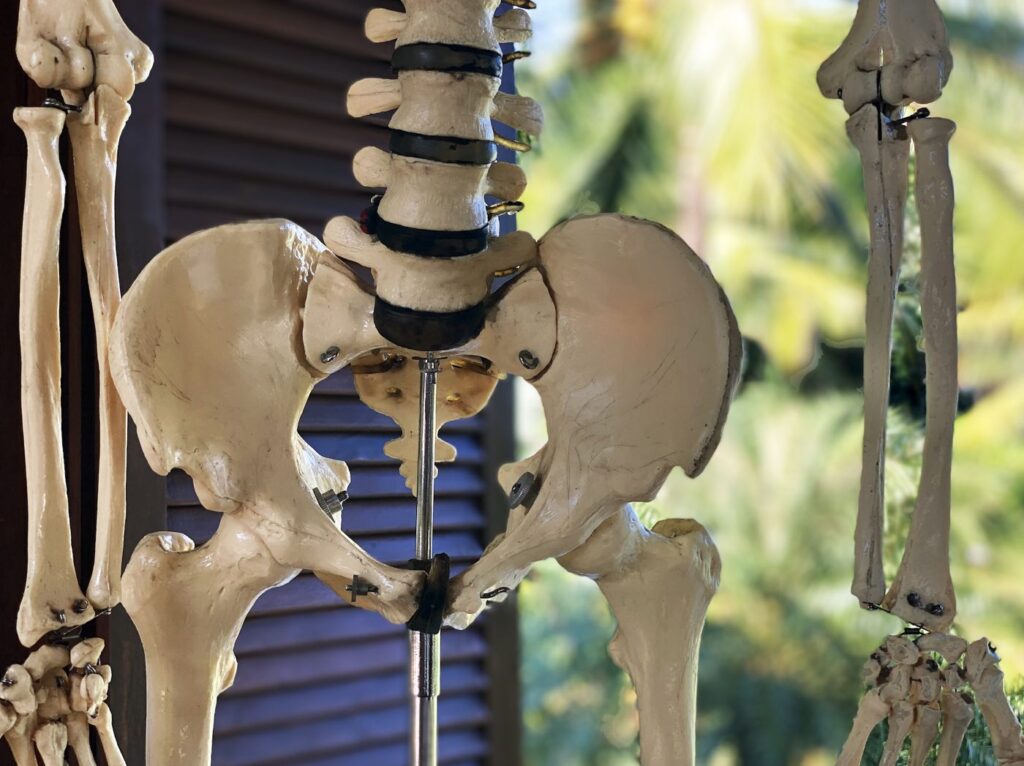
Shifts in the pelvis are common for many of us. But pelvic shifts are especially common in women who have recently given birth. As well as individuals who stand, walk or bend in a way that is misaligned with the body. It is simple for anyone to reset their pelvic floor. Even if you do not suffer from pain, resetting your pelvic floor can be a great practice. There are also many postures for back pain, but focusing on the pelvic area is one way to ease back pain in other ways.
One way to think about a pelvic tilt ailment is to consider how you feel after sitting at a desk for a long time. Or after you have spent several hours watching television. You may find that your hips and pelvis area is a bit sore, stiff, and achy. This feeling is a result of your muscles adapting to a position that is not in line with the body. To help fix this issue you can practice some simple exercises to realign the pelvis or try to ensure that when you are seated, you are doing so in a proper way.
When sitting on the couch, desk, or on a chair, first ensure that your spine is straight and your shoulders are back. Try to sit at the end of your chair or couch and keep your knees at a 90-degree angle. To prevent back injury, adjust your chair so that your back is supported. If you find that you still experience pain in your back, hips, or neck, consider practicing some pelvic reset exercises.
What Does a Pelvic Reset Do?
A pelvic reset helps the body to realign and bring the pelvis back to the center. Like the ways in which proper alignment can unite the body, aligning the pelvis can encourage a mind-body connection. After spending too much time sitting in the same position, your pelvis can become used to being in an incorrect posture. This will encourage the muscles to adapt to the wrong position, leading to a chronic pelvic tilt. By identifying this problem and engaging in specific exercises, you can work to realign your pelvis to its natural state. The exercises are simple and can be completed in the morning or right before going to bed.
How to Reset the Pelvis
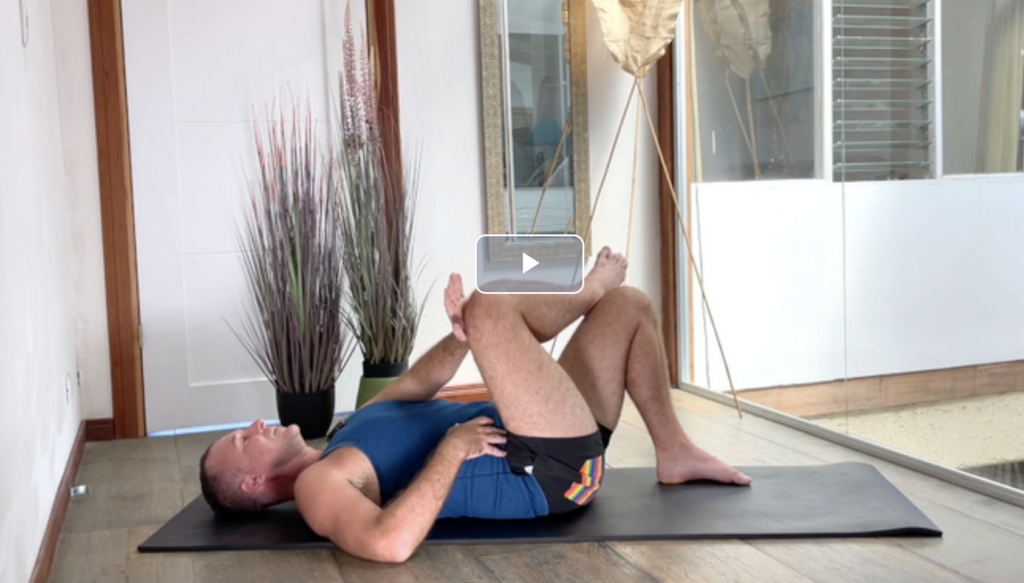
In this video, follow along with Yogi Aaron, an applied yoga anatomy specialist. During this guided pelvic reset sequence to help become more aligned with your body. With the goal of the video being a pelvic reset, you can complete this routine in less than half an hour. Accessible, and easy to follow, this guided pelvic reset video focuses on engaging the muscles of the pelvic floor. And assisting the muscles that support the pelvis. With a special focus on the glutes, Yogi Aaron will show you some simple postures that will get your pelvic back to neutral in no time!
One of the best exercises to reset the pelvis is by tightening and contracting the muscles around the pelvic floor – as you will see in the video. You can do this by following these simple steps:
- Begin this exercise by lying on your back. Knees bent and feet flat on the ground.
- As you inhale, think about contracting your anus and inner sphincter (the musculature inside the anus) as well as the glutes
- As you exhale, release the sphincter, the anus, and the glutes – letting all the tension go
- Repeat this practice as many times as you feel comfortable
This quick and easy pelvis reset practice is great to try before bed or as you are falling asleep. But, there are also many other pelvic reset postures that you can try if you have a little more time.
Yoga Postures to Help Reset the Pelvis
Clam Shell Pose:
- Begin by lying on the floor and rolling over to one side. With your knees stacked and bent, bring them up to be in a slight fetal position to create somewhat of a clamshell formation
- Using your arm that is on top, place your hand on the top knee and apply about 10 percent pressure
- Slowly lift the top knee as high as you can until you find a point where it begins to stop. Hold here.
- Repeat this several times on both sides to activate the piriformis (the flat muscle, deep in the glutes)
Shalabasana Variation/Locust Pose Variation:
- Come on to your stomach, bringing your hands underneath the shoulders
- Lift the legs up while relaxing the head down
- While the legs are raised, separate them as much as you can. On your next exhale squeeze the legs together. Then inhale to separate them again
- Repeat this movement as you feel your Mula Bandha activated
The Runners Stretch Variation: (but without the stretching)
- Roll on to your back and bend your knees to that your feet are flat on the floor
- Bring your left foot across your right knee so that you are in a figure four position
- Without lifting your shoulder, bring your right hand to meet the left knee
- Slowly press the knee into the right hand and hold here for about five seconds
- Repeat this movement several times and then move to the other side
How to Prevent a Pelvic Tilt
There are many ways to prevent a pelvic tilt and reduce the risks of irritation to the body. But it is important to remember that if pain persists or discomfort is extreme, help from a specialist should always be sought out.
Try these pelvic tilt prevention tips to help your body feel restored and calm throughout your day:
- Practice Regular Physical Activity: Adults should get an average of 30 minutes of moderate physical activity a day. This can come in the form of brisk walking, running, swimming, etc. There are many ways to stay fit whilst staying centered.
- Focus on Your Posture: This tip is especially important when sitting. Ensure that your spine is straight and you are not hunched over when reading or working at a desk. While at your desk, try some seated twists to help stretch out the spine.
- Engage in Preventative Exercises: Following along with the exercises provided above. This will encourage your body to be in alignment. They will also assist the muscles to form in proper formation.
It can be uncomfortable to be in constant pain from a misaligned pelvis. But by focusing your attention on the correct areas, you can be sure to bring your mind and body back to the center.
Thinking about deepening your yoga practice? Consider attending one of Yogi Aaron’s Yoga Teacher Trainings! These yoga teacher trainings will radically shift the way you think about yoga forever. If you are in need of stability in the joints and some practice on teaching your muscles how to work – then this retreat is for you. Who doesn’t want to live pain-free and stronger than ever?
We dare you to live pain-free!
* Studies show

